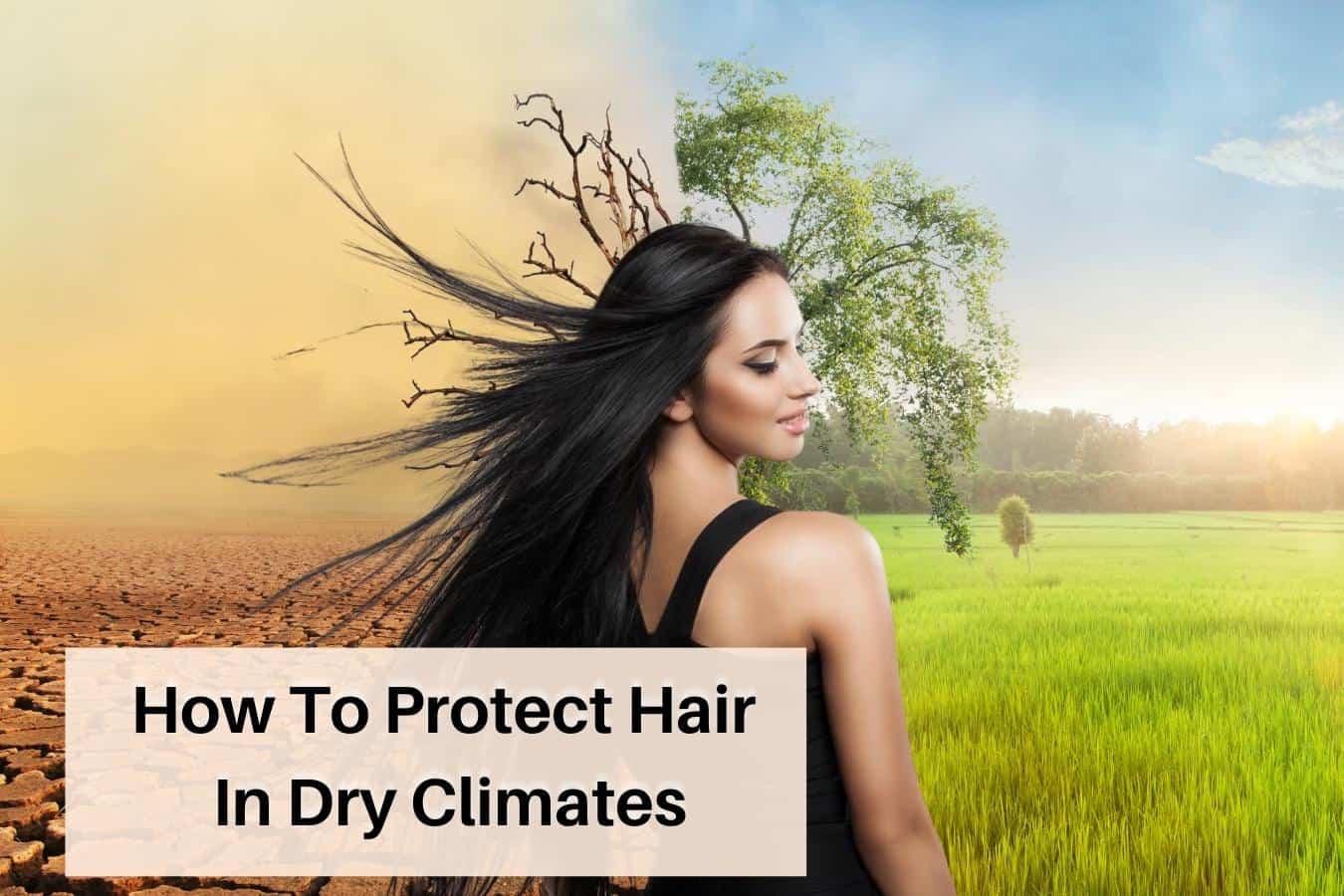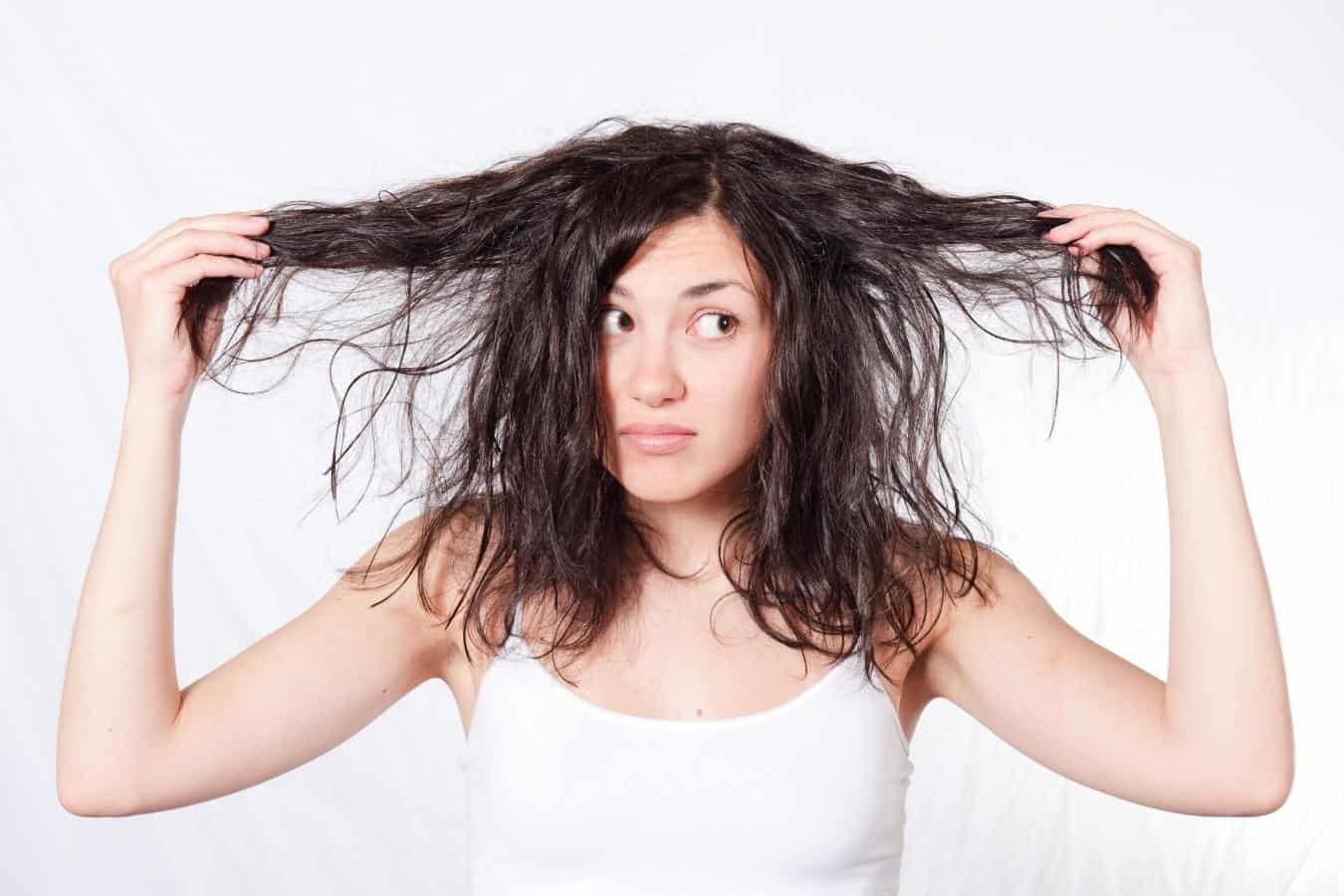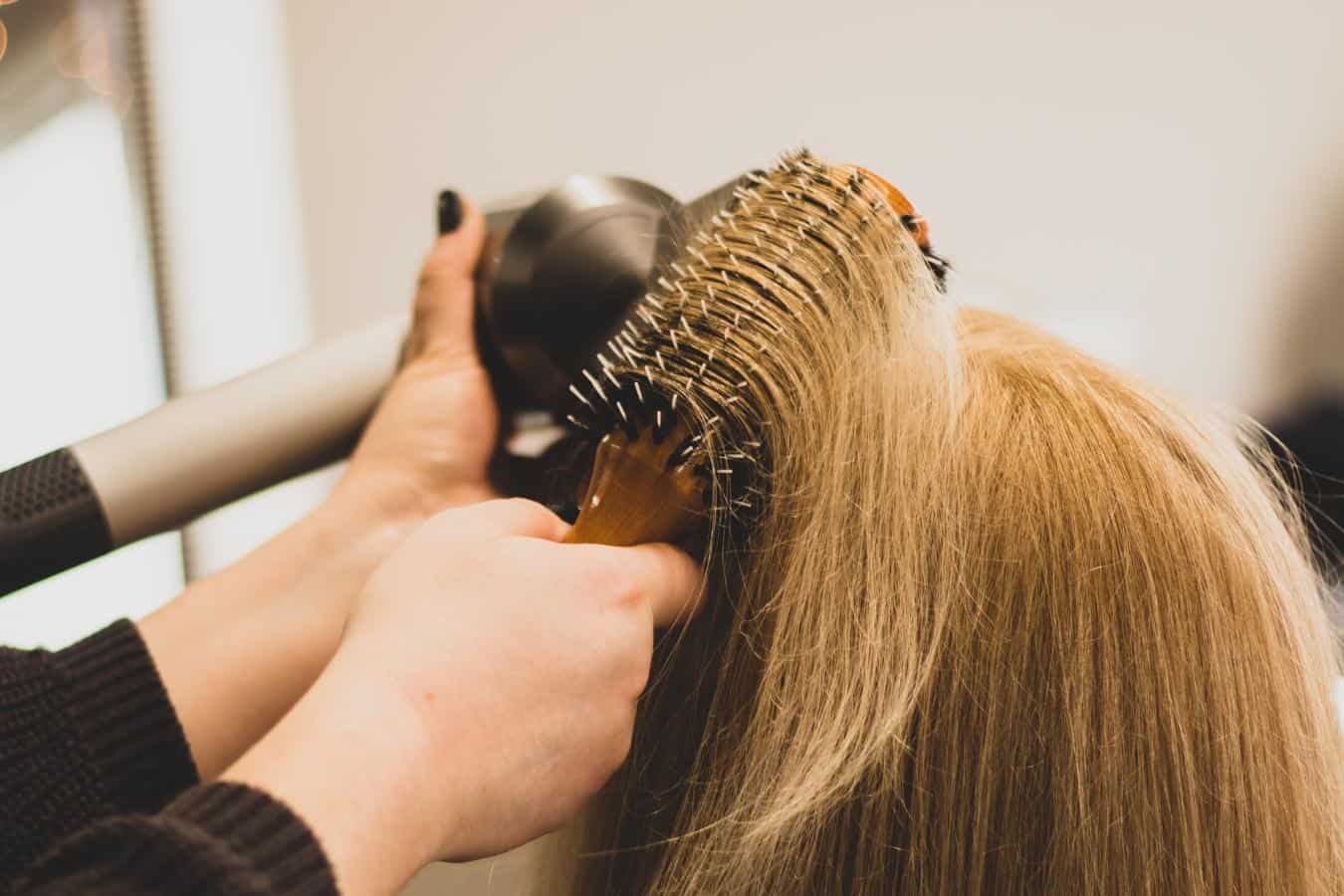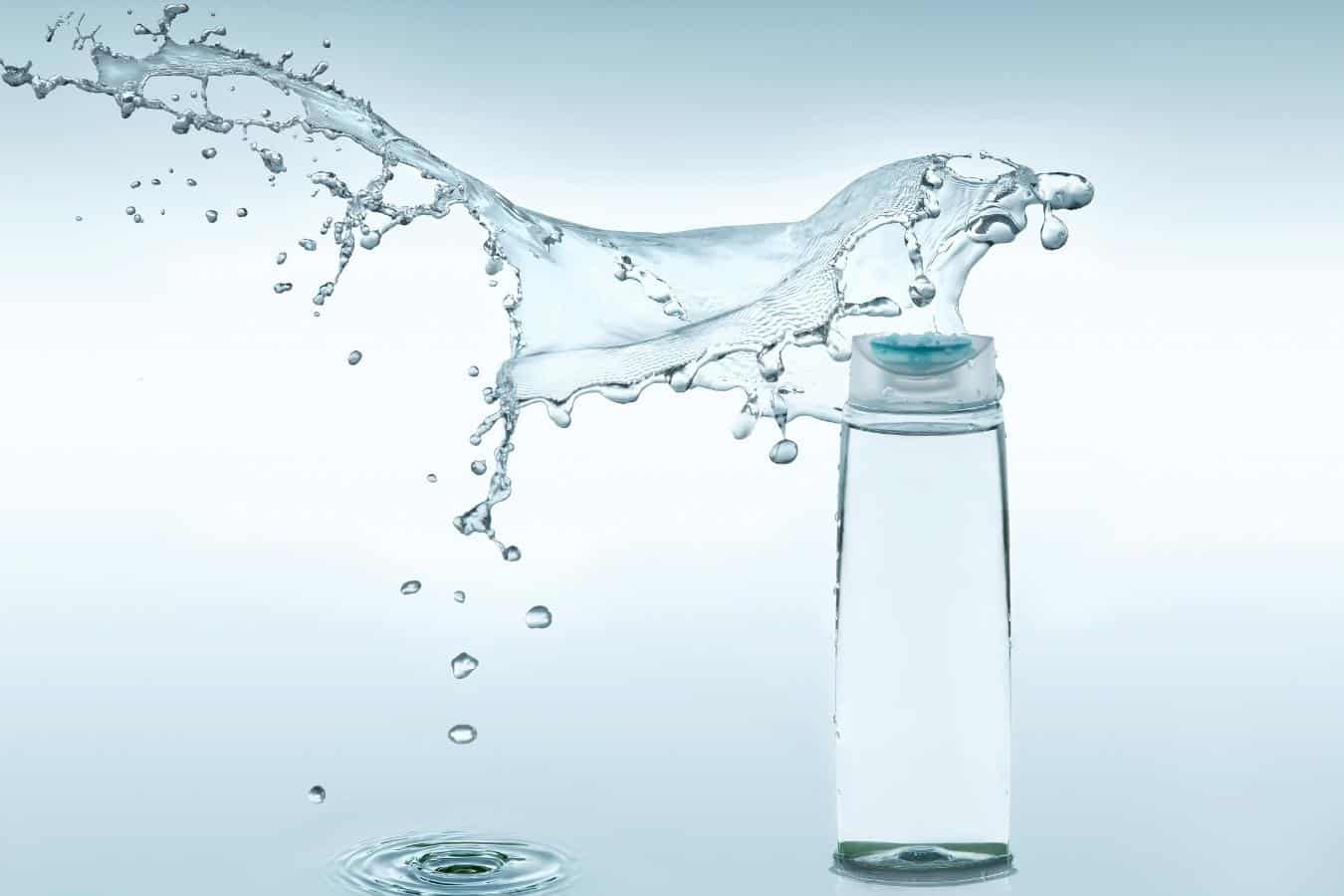If you live in a dry area or have traveled to warm countries, you may have noticed your hair turning dull and brittle. So how do you protect your hair in dry climates to avoid this from happening? We’ve got all the details.

Locking moisture into your hair is the most important haircare step if you’re living in dry climates. Using deep conditioners and regular mask treatments, as well as nourishing oils to seal hydration into your strands, are some of the best ways to protect hair from environmental dryness.
What Is A Dry Climate?
Without getting too scientific, a dry climate is typically either arid or semi-arid, meaning that it receives very low levels of precipitation (rain).
In terms of the US, some of the areas with the driest climates include Death Valley National Park, states like the Dakotas, Nevada, Arizona, and California, and cities like Las Vegas, Denver, and Phoenix.
What Does A Dry Climate Do To Hair?
Dry climates experience little to no rain. The result is that their air is very dry, and lacks moisture. This can seriously impact both our hair and skin.
Typically, a dry climate will cause hair to become flat and lifeless, lacking either texture or bounce.
Your hair will lose hydration easily, and be more vulnerable to breakage, brittleness, and split ends.
It’s therefore more important than ever to use moisture-boosting ingredients in your haircare.
Don’t forget that the dry climate may also impact your scalp – and if you’re in a sunny dry climate, consider the degree to which your hair and scalp might be exposed to harmful UV rays.
How To Protect Your Hair In Dry Climates – 7 Easy Ways

1. Moisturize
Moisture is the name of the game when it comes to protecting and nourishing hair of all types and textures in dry climates.
Look for shampoos and conditioners that contain high water content, as water is a humectant, meaning that it draws moisture into your hair.
Similarly, choose to use haircare products that contain moisturizing oils like coconut, avocado, and argan.
You can then double down on this moisture after washing your hair by massaging hair oils into your strands.
2. Don’t over shampoo
Remember, the dry air will be sapping moisture from your hair. If you are washing your hair too frequently, you’re only going to be drying your hair out further – particularly if you have natural hair texture or curls.
3. Avoid intensive chemicals
In dry climates, you need to be protecting your hair as much as possible, and using products that contain high levels of chemicals like sulfates will only dry your strands out further.
Try to remove these products from your regular routine, opting for natural alternatives.
Similarly, whilst you might be a fan of coloring and processing your hair, you should always see a stylist who is well-trained and not at risk of over-processing your hair.
These treatments can dry your locks out further, resulting in hair becoming brittle and easily breakable.
Do your research to ensure that this doesn’t happen.
4. Avoid glycerin
Water is a humectant, meaning it’s a vital component in the battle against dry climates.
Glycerin is also a humectant, drawing moisture from the air. In regular and humid climes, haircare products that contain glycerin can be a fantastic way of boosting your hair’s hydration levels.
However, in dry climates where there is very little moisture in the air to draw on, the glycerin will work the other way around.
It will draw the moisture out of your hair instead, further sapping it of much-needed moisture.
As such, when you’re looking to protect your hair in dry climates, you need to steer clear of glycerin-based products.
5. Reduce heat exposure

Whilst you might be a fan of using styling tools like flat irons, curling tongs, and hairdryers, when you’re living in dry climates, these aren’t your hair’s best friend.
Using styling tools that require heat can dry your hair even in non-dry climates, so using them in dry climates may exacerbate the problem, and you may experience a greater number of split ends and strand breakage.
Try to avoid using them altogether if you can, and opt for protective hairstyles like braids instead.
Look to use a microfiber towel to air dry your hair, or a soft fabric like an old cotton t-shirt, so as to reduce the damaging friction caused by rubbing your hair with standard toweling material.
If you do use styling tools with heat, always use a protective spray on your hair before applying heat. Ideally, you’d also use a cooler setting and keep the dryer at a distance from your hair.
6. Use UV protection sprays
If you’re living in a dry climate, you’re likely frequently exposed to the sun. As such, you need to be protecting both your hair and scalp from the worst UV rays.
Use a UV protection spray on both your strands, hairline, and parting in order to prevent your hair and skin from burning.
7. Clarify your hair
In order to give your deep conditioning and oil treatments the best chance to intensely nourish and hydrate hair, you should aim to deep cleanse and clarify your hair once or twice a month.
Using a clarifying shampoo treatment will remove the build-up that can generate in your hair from everything to your surrounding environment and the minerals in your water supply.
By removing the build-up, all your moisturizing ingredients will be able to penetrate the hair shaft better for maximum hydration.
How To Moisturize Hair In A Dry Climate

Deep condition, pre-poo, and co-wash
It’s worth integrating moisture-rich masks, deep conditioners, and oils regularly into your routine, as these will help to lock hydration into your parched strands, no matter what your hair type or texture is.
Haircare products like overnight masks and deep conditioners will penetrate the hair shaft and nurture the cuticle with all of its amino acids and oils, so it’s worth investing the time and effort into using regular deep conditioning treatments.
If your hair is afro, textured, or curly, you can both co-wash and pre-poo your hair.
Pre-pooing is the process of applying a treatment before shampooing, which adds an extra layer of protection and moisture to your strands, too.
The pre-pooing will help your hair to be softer and may even boost the impact of your conditioner.
Co-washing, on the other hand, involves using conditioner or a special co-wash in order to remove build-up, cleanse, and condition strands.
Use hair oils overnight
You can always massage oil such as coconut into your hair before bed, which will allow them to penetrate your strands overnight.
Pay particular attention to the ends of your hair, which are more vulnerable to breaking and splitting.
If you’re worried about the oil rubbing off onto a pillow, use a silk or satin bonnet or scarf to wrap your hair.
Just remember not to go overboard with the oils. Hair oils will seal moisture into hair, but they won’t necessarily attract moisture – that’s why you need haircare products that contain water.
If you’re over-enthusiastic with your hair oils, you may in fact be blocking moisture from entering your strands. It’s all about balance.
Use a spray bottle
If you have naturally textured hair or curls and live in a dry climate, fill a spray bottle with water and a couple of drops of hair oil.
Spritz or mist this onto your hair regularly to help add a little boost of moisture to your strands.
Drink lots of water!
It’s an obvious one, but a key way to protect hair in dry climates is by drinking plenty of water. Staying hydrated will keep your skin, hair, and everything else looking and feeling their best.
Disclaimer: This site is not intended to provide professional or medical advice. All of the content on LovedByCurls.com is for informational purposes only. All advice should be followed at your own discretion. Ingredients may change at any time so always check the product label before using. Check our full disclaimer policy here.
